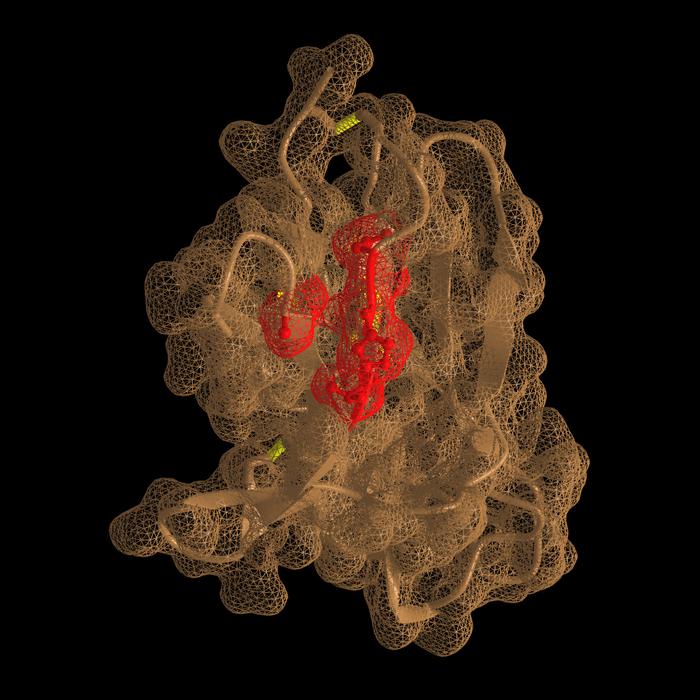LA JOLLA, CALIF. – June 5, 2023 – Researchers at Sanford Burnham Prebys, collaborating with scientists from Eli Lilly and Company, have revealed the structure and function of a drug called LY3361237, which can reduce the harmful activity of the immune system to help treat autoimmune diseases. Their work laid the foundation for a new treatment that’s currently in a Phase 2 clinical trial for lupus, an autoimmune disease affecting multiple organs in the body. The study is published in Structure, a Cell Press journal.
The findings could also help scientists discover more drugs that target the immune system, a rapidly growing area of biomedical research.
“It’s miraculous that we can change the activity of the immune system with drugs, but we’re still at an incredibly early stage in terms of figuring out how this works,” says Professor Carl Ware, Ph.D. “The drug we describe in this study is an antibody that has shown promise in initial clinical trials, but understanding how it works on a molecular level will help scientists discover even more ways to modify the immune system to treat autoimmune diseases.”
Autoimmune diseases occur when the immune system attacks the body. There are more than 80 known autoimmune diseases, and researchers estimate that about 5–10% of the population is affected by these diseases. Some well-known examples include rheumatoid arthritis, psoriasis and lupus.
“Immunological disorders are a major unmet medical need,” says Ware. “Some can be managed effectively, but most of these diseases have limited treatment options, so many people just have to learn to live with the symptoms.”
The newly published study is the culmination of a long-standing collaboration between Sanford Burnham Prebys and Eli Lilly and Company. Their goal was to find a way to temper the activity of the immune system in autoimmune diseases. They were able to discover that LY3361237 can rebalance the immune system to prevent it from attacking the body.
The drug works by activating a chemical messenger in the immune system called BTLA, which is a major focus of Ware’s research. In healthy people, BTLA is an immune checkpoint—a brake for the immune system to stop it from continuing to fire once an infection is under control. However, in people with autoimmune diseases, this brake never engages, so the immune system doesn’t know when to slow down.
“LY3361237 is the first antibody drug that’s known to increase the activity of BTLA to inhibit the immune system, which means it has extraordinary potential as a therapy for autoimmune diseases,” says Ware.
The drug produced by Lilly entered a Phase 1 clinical trial in healthy subjects in 2018, and began recruiting patients with lupus for a Phase 2 trial in 2021. This trial will evaluate the efficacy and safety of the new treatment and is expected to be completed in two to four years.
In the meantime, the recently published study in Structure can provide a treasure trove of information for researchers studying the molecular biology of the immune system, which could help drive the discovery of more potential therapeutics for immunological diseases.
###
Additional authors on the study include Timothy C. Cheung, Paulina Delgado Cuenca, Jiawen Huang and Stacie Lim, Sanford Burnham Prebys; Shane Atwell, Lisa Bafetti, Karen Froning, Jörg Hendle, Michael Hickey, Carolyn Ho, Ricky Lieu, David Lippner, Victor Obungu, Lindsay Ward-Kavanagh, Kenneth Weichert and Andrew C. Vendel, Eli Lilly and Company.
The study was supported by SBP-Lilly Collaborative Research Agreement (RCA15-15).
The study’s DOI is 10.1016/j.str.2023.05.011
About Sanford Burnham Prebys
Sanford Burnham Prebys is an independent biomedical research institute dedicated to understanding human biology and disease and advancing scientific discoveries to profoundly impact human health. For more than 45 years, our research has produced breakthroughs in cancer, neuroscience, immunology and children’s diseases, and is anchored by our NCI-designated Cancer Center and advanced drug discovery capabilities. For more information, visit us at SBPdiscovery.org or on Facebook facebook.com/SBPdiscovery and on Twitter @SBPdiscovery.
Journal
Structure
DOI
10.1016/j.str.2023.05.011
Article Title
Epitope topography of agonist antibodies to the checkpoint inhibitory receptor BTLA
Article Publication Date
5-Jun-2023

















